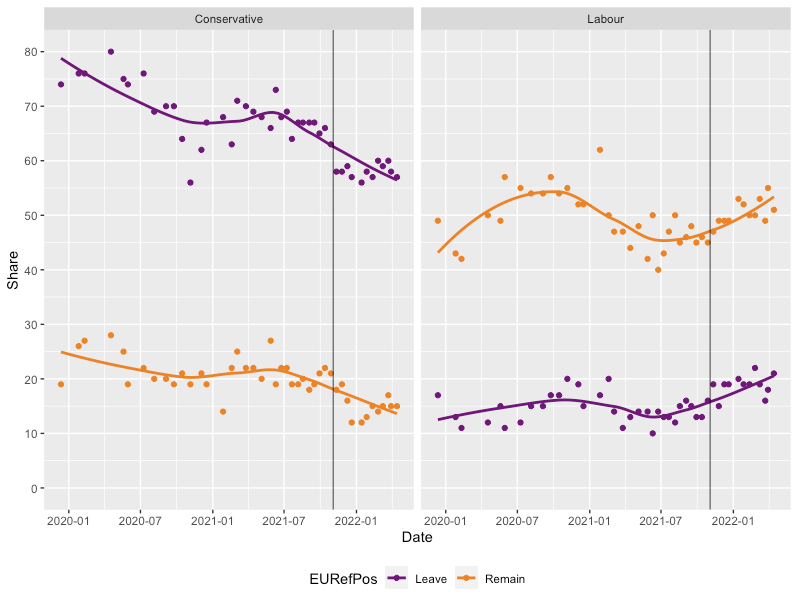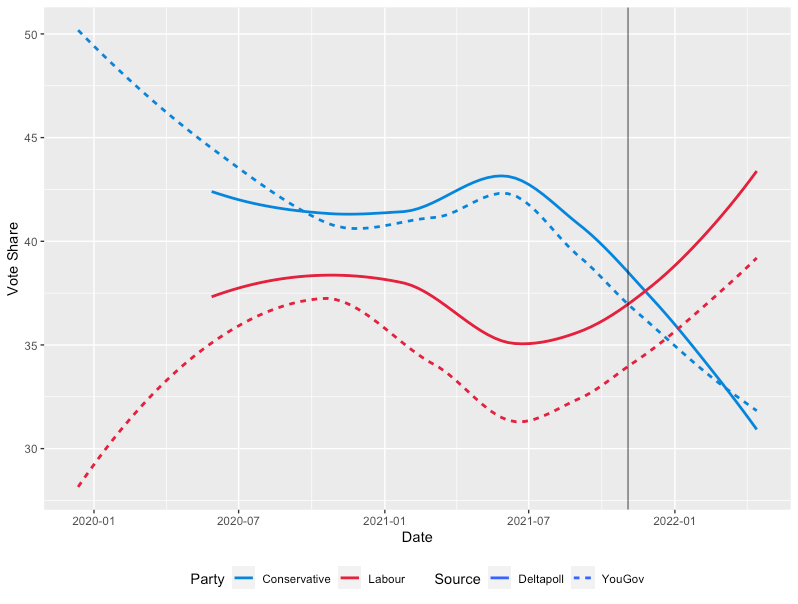The polls are not looking good for the Conservatives ahead of the 2022 local elections. Although predictions of a loss of 800 seats might be a touch overblown, it is unlikely to be a night of celebration for the Tories. The party now has more ‘-gates’ than the Liberal Democrats have seats - Pattersongate, Partygate, and now Sunakgate having been the most damaging to the party.
There’s probably very little the Conservatives can do in the short term to reverse this damage. A lot of it is rooted in direct anger at Boris. Removing him is risky given the lack of obvious alternatives: yes, he is damaged goods, but you’d rather have a damaged Aston Martin than a pristine Fiat Punto.
There are also worries that most leadership contenders either have a) no economic vision to address the short-term and long-term issues the country faces, or b) an economic vision largely out of touch with the hallowed Red Wall (i.e. Sunak).
Now, I’ve written elsewhere about why we shouldn’t think of Red Wall Tories as significantly different from Tories elsewhere - see ‘Don’t stereotype Red Wall Tories, Boris’ and ‘Tory voters say: spend, spend, spend’ - but the real problem is, even if Boris does ‘get’ his new voter coalition better than any alternative leader, he seems incapable of translating this into policy - and then delivering it. You can’t run a government on vibes.
I’m of the opinion that, if Boris really wanted to, he could use the cost of living crisis to reset his government and deliver a genuinely radical programme under the banner of ‘Tory Democracy’, a la Liverpool’s Archibald Salvidge (without the sectarian tinge), rather than proceed with this reheated, stodgy, growth-choking Mayism with an unnecessary culture war thrown in for good measure. That might be a blog for another time.
Anyway, the purpose of this little post is to look at where Johnson is losing votes. The answer is fairly clear: both Remain and Leave voters are abandoning the Conservatives - Leavers at a faster rate than Remainers - whilst Labour are attracting voters from across the referendum divide in fairly equal proportions.
To explore this, I’ve looked at polling from YouGov to explore changes in Conservative and Labour support by referendum position since the 2019 general election.
Why YouGov? They’re so regular that we can get a good sense of what is happening without merging together different pollsters and perhaps mixing house effects. Because there are so many, and because it’s not easy to copy and paste from the tables into an excel file, I decided to go for every other poll listed here. (It is very annoying that pretty much all polling results are released as PDFs, which means they typically have to be transcribed manually, and you can rarely copy and paste figures - can this be levelled up please?)
So, where are we? Here is the state of play since the 2019 general election, with the solid black line marking the start of the Owen Patterson affair in early November. We can see the Tories’ polling had begun to decline before the Patterson affair but the polls immediately after it were particularly bad for the party.
The next chart breaks party support down by voters’ Leave or Remain identity.
Two things are happening here:
Since the Patterson affair, the Conservatives have declined to a position whereby they win a smaller share of Remain voters than Labour win among Leave voters.
We are also not too far from the tipping point where Labour win a greater share of Remain voters than the Tories win of Leave voters. This is because Remainers are showing signs of consolidating behind Labour (despite the much wider range of options available to them) just like in the second half of 2020 - but unlike then, the Conservatives now have a much weaker grip on Leave voters.
The next chart shows the same information but allows us to eyeball the trend for each party more easily.
For Labour, the pattern is positive - the upward slope of the regression lines are broadly equal in steepness, suggesting the party is gaining both Remain and Leave voters at an equal rate. So, ironically, it’s Starmer who has the… momentum here (get it? #lol)…
Obviously, this is good for Labour, given Leave voters are more geographically spread and many of the seats the Tories will be defending against Labour have narrow majorities. Small swings will be vital here.
For the Conservatives, there is a slight silver lining: although the regression line is trending down, we can see that most YouGov polls have the party consistently winning around 55-60% of Leavers and around 12-17% Remainers. Not quite the giddying heights of the early 2020 poll figures of 75%/25% respectively, but then you shouldn’t try to close ranks to protect your crooked chum, attend illegal parties and have a Chancellor who benefits from non-dom status… despite that, this could be a sign that the party has reached its floor.
What is interesting is that since early 2021 both parties have seen a broadly consistent difference in support between Leave and Remain voters, despite rapidly changing vote shares.
Since July 2021, the Leave - Remain difference for Labour has remained at just below -30 points, whereas for the Conservatives it has decreased from about a +47 point lead to around +42 points. So although the party is losing both Remain and Leave voters, it is losing Leave voters at a faster rate.
The danger for Johnson is that the 2024 election will be fought on 2019 assumptions - Starmer’s no Corbyn, and Brexit will barely figure in the debate. Immigration might help with the base, but it’s all going to come back to the economy - and the Tories seem to have no answers to this at the moment.
PS. I did originally do this with Deltapoll, before I decided I needed more data points and so included YouGov too - but then I saw the structural difference between the two pollsters - in the chart below - and decided to just stick with YouGov because of the greater range of dates and higher frequency of polling.








